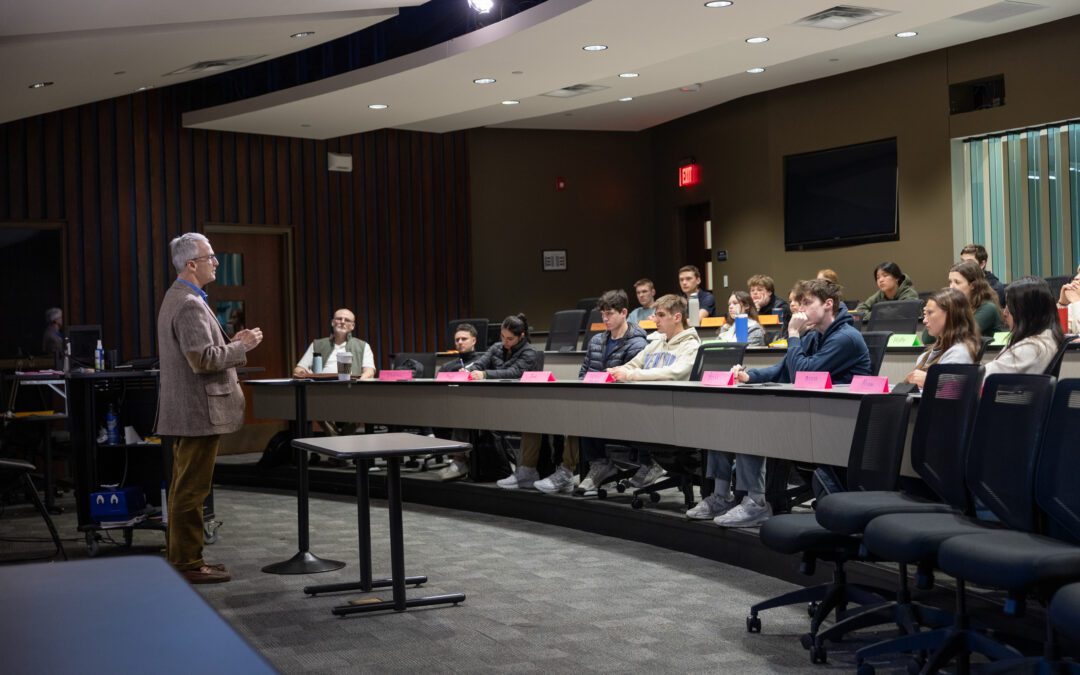Don Wolfe, 1984 Oklahoma Wesleyan University alumnus and current Senior Biologist at the Sutton Avian Research Center, has dedicated his entire career to wildlife research and endangered species. As a biology student in the ‘80s, Wolfe knew he was meant to work with wildlife, and when the Sutton Center opened during his tenure as a student, he found his opportunity. “Right after I graduated,” shared Wolfe jokingly, “I gave them my résumé and pretty much bugged them until they hired me.” That was more than 30 years ago, and in that time, Wolfe moved from basic bird care and tasks such as digging ditches at the research center, to a supervising role, to more independent research—where Wolfe has focused for the last twenty plus years.
 This summer, Wolfe connected again with the University by way of OKWU Physics and Math professor, Dr. Brian Turner. Wolfe and Dr. Turner traveled to northern New Mexico’s Sangre de Cristo mountains to build on Wolfe’s 11 years of research on the distribution and limiting factors of the White-tailed Ptarmigan in the region. The Colorado and New Mexico populations of the Ptarmigan are currently being considered for a listing as “Threatened” under the Endangered Species Act. These birds, noted Wolfe, “are actually an Arctic species of grouse that have adapted to living well above the tree line as far south as northern New Mexico…but ptarmigan and other cool climate or alpine species are declining from their historical range.” The purpose of this trip, therefore, was primarily to map the vegetation that is both important for the ptarmigan and an indicator of where they still exist.
This summer, Wolfe connected again with the University by way of OKWU Physics and Math professor, Dr. Brian Turner. Wolfe and Dr. Turner traveled to northern New Mexico’s Sangre de Cristo mountains to build on Wolfe’s 11 years of research on the distribution and limiting factors of the White-tailed Ptarmigan in the region. The Colorado and New Mexico populations of the Ptarmigan are currently being considered for a listing as “Threatened” under the Endangered Species Act. These birds, noted Wolfe, “are actually an Arctic species of grouse that have adapted to living well above the tree line as far south as northern New Mexico…but ptarmigan and other cool climate or alpine species are declining from their historical range.” The purpose of this trip, therefore, was primarily to map the vegetation that is both important for the ptarmigan and an indicator of where they still exist.
“I am always looking for research connections and projects for OKWU students,” explained Dr. Turner, “[Wolfe] has spoken to our students before, and I have volunteered at the research center” so joining the trip was an easy decision. It “involved hiking through the [Sangre de Cristo] mountains, and taking latitude, longitude, and altitude readings of plants, while looking for signs of the Ptarmigan” and, shared Dr. Turner, in spite of cold nights, strenuous hikes, freeze-dried food, and lack of oxygen due to altitude, the views were once-in-a-lifetime.”
A highlight of the trip for both scientists was actually seeing a ptarmigan in this natural environment, as well as several other types of wildlife. With the data the team brought back, a more accurate picture of the vegetation can be observed, aiding in determining changes in the future. Additionally, Dr. Turner is excited at opportunities to bring students on future research trips, furthering the University’s connection to the great resource of the Sutton Avian Research Center. Aside from the great scientific value, Dr. Turner also shared about the spiritual value, saying “I will never forget my connection to nature and to the Creator as we crossed woods, snow, marshes, boulder fields, and steep mountain faces.”


